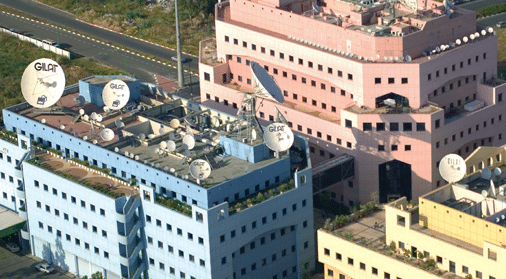[Via Satellite 05-21-2015] Following an upper management shakeup in the first quarter in which Erez Antebi decided to step down as CEO at Gilat Satellite Systems, the new Interim CEO and Chairman of the board Dov Baharav reported less-than-stellar numbers yesterday in its first quarter 2015 conference call, even as the company announces new contracts in the vein of airborne and rural connectivity. First quarter revenues for the company saw a 16.5 percent drop to $42.5 million in Q1 from $50.9 million in the same period last year, a decrease Baharav attributed to the “normal seasonality of our business and mix of products and services, which affected profitability.”
Gilat saw two contracts come to term in Q1 2014 that spiked its profits last year, specifically Colombia’s Ministry of Information Technologies and Communications (MINTIC) Kioscos Vive Digital project and Peru’s Integración Amazónica Loreto (IAL) project which were non-recurring. While the quarter was absent of similarly profitable projects, the company insisted that it is continuing to see growth in its key market areas: High-Throughput-Satellite (HTS), cellular backhaul, broadband Internet in rural areas and In-Flight Connectivity (IFC).
The first quarter did see some good news, including the company’s largest contract award ever, in which the Peruvian governmental entity Fitel granted Gilat with a $285 million dollar contract to support its regional telecommunications infrastructure program. The project looks to complement a larger initiative, the Peruvian National Fiber Backbone project, which aims to connect rural villages across the mountainous and jungle-filled country with broadband services.
“This project is BOT, build, operate and transfer,” explained Baharav. “The fiber-optic transport networks will be built, operated for up to one year and transferred to the ministry, while the access networks based on wireless technologies will be operated for 10 years before being transferred to the ministry. We expect to connect over 1,000 governmental institutions to the broadband services.”
Gilat won bids for three regions within the framework phase of the Peruvian project and believes it can continue generating revenue through 2016 by enabling telecom and mobile operators to provide data services to the population in remote regions using the new infrastructure.
When it comes to HTS, the company is also seeing further expansion for its SkyEdge 2-c system, which supports multiple applications and is managed by TotalNMS, Gilat’s comprehensive network management system. Gilat has signed an agreement with an undisclosed, major European satellite operator to become its partner for a solution in Europe, with potential expansion for Africa. New deals seem to be on the horizon as Baharav disclosed that the company is engaged in negotiations with another European satellite operator for a new HTS service as well as an unnamed satellite operator in Asia.
“We are witnessing an acceleration of HTS activity globally,” said Baharav. “As a result in Q1 we were successful in winning these [contracts], however not all of them have translated into revenues yet.”
Baharav noted the company is seeing expanding coverage, with satellite cellular backhaul as the major driver. In December, a Latin American Multi-Network Operator (MNO) signed a contract with Gilat for a 3G cellular backhaul project. The agreement includes expansion of its SkyH2 hub and an order for a Very Small Aperture Terminal (VSAT) to up bandwidth capacity and management.
The growing IFC market is also taking center stage in upcoming months as the company puts a two-year Research and Development (R&D) project for airborne connectivity alongside Honeywell in its rearview.
“Following a two year investment in Gilat [Research and Development] R&D, Honeywell Aerospace placed its first orders for a new Wavestream Ka-band RF unit and Ka-band networking data unit to be integrated into Honeywell. It will now take on satellite communication terminals,” said Baharav. The company’s subsidiary Wavestream will supply Honeywell with Ka-band transceivers to integrate into Honeywell’s airborne antenna systems that will enable connectivity through the Inmarsat Global Xpress network.
Outside of commercial markets, airborne connectivity in the defense market is also proving to be a profitable space as Gilat demonstrated its airborne mobility technology with operational deployment of its Unmanned Aerial Vehicle (UAV) terminal.
“In the first quarter a major aerospace defense integrator took delivery of Gilat’s BlackRay terminal for its UAV following a series of successful test flights in Latin America. The first units have been installed and are operational,” Baharav said.
As UAV proliferation takes off, the BlackRay UAV terminal enables broadband communications that facilitate Intelligence, Surveillance and Reconnaissance (ISR) missions for Beyond Line of Sight (BLOS) operations.
“We continue to focus our R&D sources on developing a solution to address our growth market: SkyEdge 2-C system for HTS, specialized terminals antennas and box for mobility, CellEdge for rural connectivity, Capricorn for cellular backhaul and Gemini for consumer and enterprise,” said Baharav. “All have been well received by the market and we believe we are in a good position to translate our offering to continuous growth.”
The post Gilat Looks to Connectivity Contracts to Bolster Lagging Revenues appeared first on Via Satellite.
